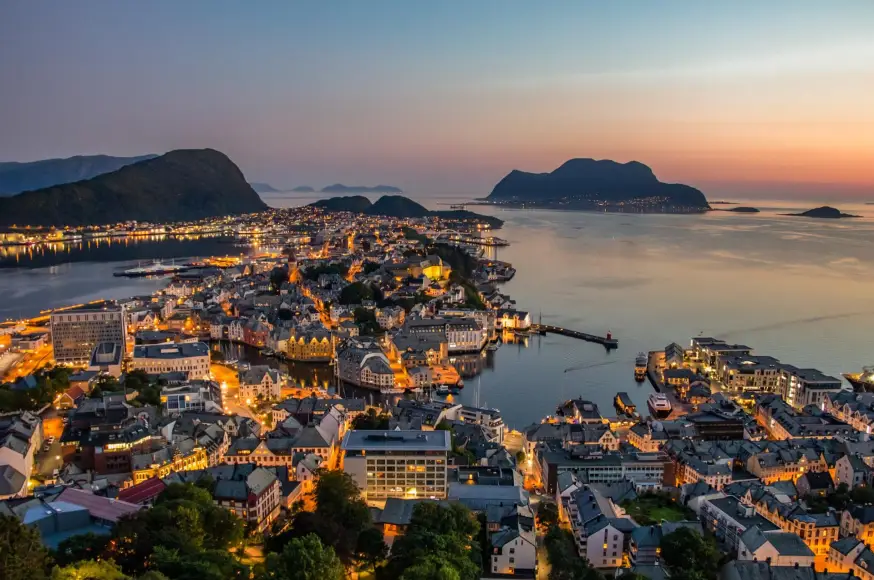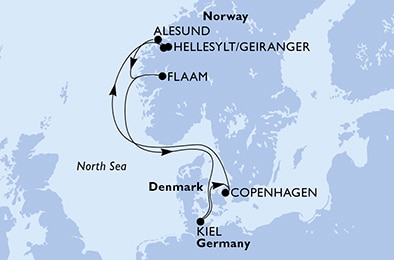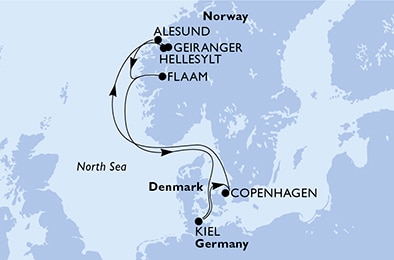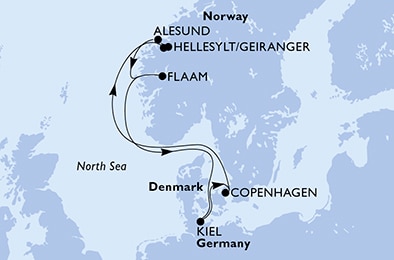
Port Geiranger
Geiranger, a small village in western Norway, is one of the country’s most iconic and breathtaking destinations, renowned for its placement at the end of the stunning Geirangerfjord, a UNESCO World Heritage Site. Surrounded by towering cliffs, cascading waterfalls, and lush greenery, Geiranger offers visitors unmatched natural beauty. The fjord is home to famous waterfalls such as the Seven Sisters, The Suitor, and Bridal Veil, each with its own captivating story and mesmerizing views. Visitors can explore the fjord by boat, kayak, or even from above on scenic hikes, making it a haven for outdoor enthusiasts and photographers alike.
Beyond the fjord, Geiranger offers a range of experiences, from visiting the Norwegian Fjord Centre, where you can learn about the area’s history and natural heritage, to driving the famous Eagle Road (Ørnesvingen) or the Trollstigen Mountain Road, both offering spectacular viewpoints. The small village itself is charming, featuring cozy cafes, souvenir shops, and a friendly atmosphere that complements the dramatic surroundings. Whether you're seeking adventure, tranquility, or simply a chance to connect with Norway’s awe-inspiring wilderness, Geiranger is a must-visit destination that embodies the magic of the Norwegian fjords.
History
Geiranger, a small village nestled at the head of the Geirangerfjord in western Norway, has a history deeply tied to its rugged natural surroundings. The area was originally settled by small farming communities, with evidence of human activity dating back to the Viking Age. The steep slopes of the fjord were home to isolated farms that clung to the cliffs, and the residents relied on agriculture, livestock, and fishing to sustain themselves in this remote and challenging environment. Historical records also show that the Geirangerfjord was an important route for trade and communication, as Norway’s fjords served as natural highways connecting settlements along the coast.
Over time, as transportation improved in the 19th and early 20th centuries, Geiranger began to welcome visitors drawn by its stunning landscapes. By the late 1800s, the village became a stop for steamboats carrying tourists exploring Norway's famous fjords, marking the start of its transformation from a secluded farming community to a sought-after travel destination. Despite the growth in tourism, Geiranger has remained steeped in its historical roots, with many of its traditional farms preserved as cultural landmarks. Today, Geiranger’s history is remembered not only in its preserved architecture and sites but also in its enduring connection to Norway’s heritage and the natural beauty that has shaped the lives of its inhabitants for centuries.





 With bus transport to the port
With bus transport to the port










